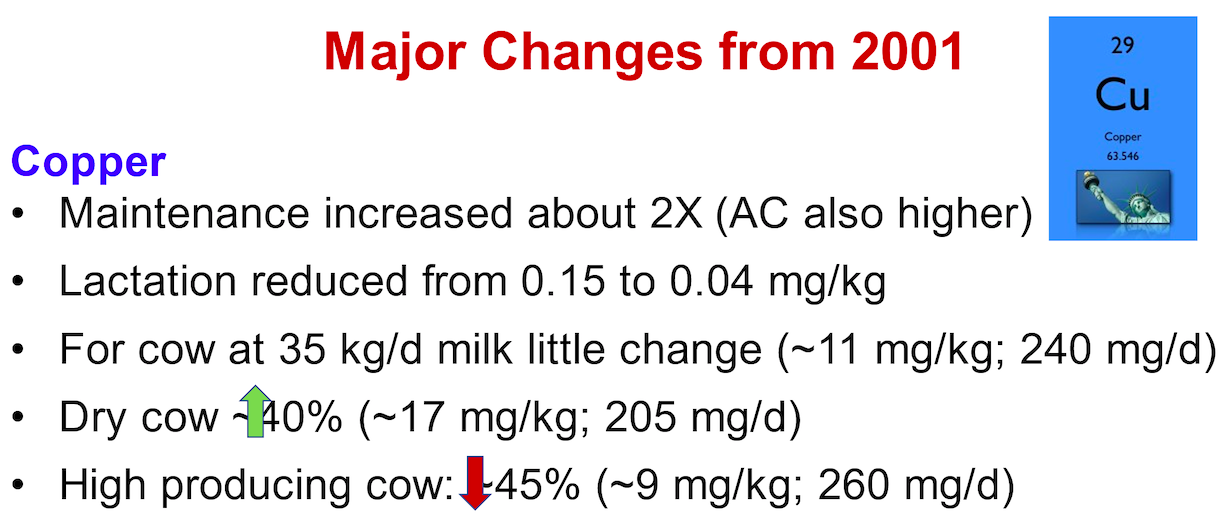Since publication of the latest edition of Nutrient Requirements of Dairy Cattle (aka NRC or NASEM Dairy 2021), many practicing nutritionists are paying closer attention to mineral supplementation, notes Emeritus Professor Bill Weiss at the Ohio State University.
Dr. Weiss says that copper (Cu) supplementation warrants special attention. The main concern is the risk of toxicity resulting from over-supplementation in dairy diets.
New data indicates the maintenance requirement for Cu is about twice as high as in NRC 2001, which points to increased dietary requirements for dry cows, even taking into account the new higher absorption co-efficient (AC).
However, for lactating cows, the NRC 2001 recommendation has the requirement (per kilogram of milk) more than three times higher than new data indicates. So, for higher producing cows, Cu requirements for higher producing cows are slightly less than NRC 2001.

Dietary concentrations shown are average requirements, so formulation should be about 1.2 times more.
Copper is stored in the liver and concentrations decrease under diets deficient in Cu and increase as dietary Cu increases. Over-supplementation can result in Cu toxicity where the clinical sign is death. In other words, cows don’t give any indication that they are in trouble.
Dr. Weiss points out that the risk of Cu toxicity is not the result of NRC 2001 overestimating requirements. Rather, over-supplementation can occur when:
• Nutritionists often set forage Cu concentrations at 0 (zero). Ideally the concentration should come from a wet chemistry analysis, but if NIR is used, a good mean value will be more accurate than setting the value at 0. Corn silage averages 6 to 8 ppm Cu. It is not necessary to constantly analyze for Cu, but it is wise to know the approximate average concentration and start with that in the formula matrix.
• Ration formula does not take into account higher absorption of Cu from non-sulfate specialty trace mineral products (organics, chelates, hydroxys). Manufacturers of specialty products can advise on AC and accurate ration formulation using their products.
Questions?
Email FeedInsight 4U

